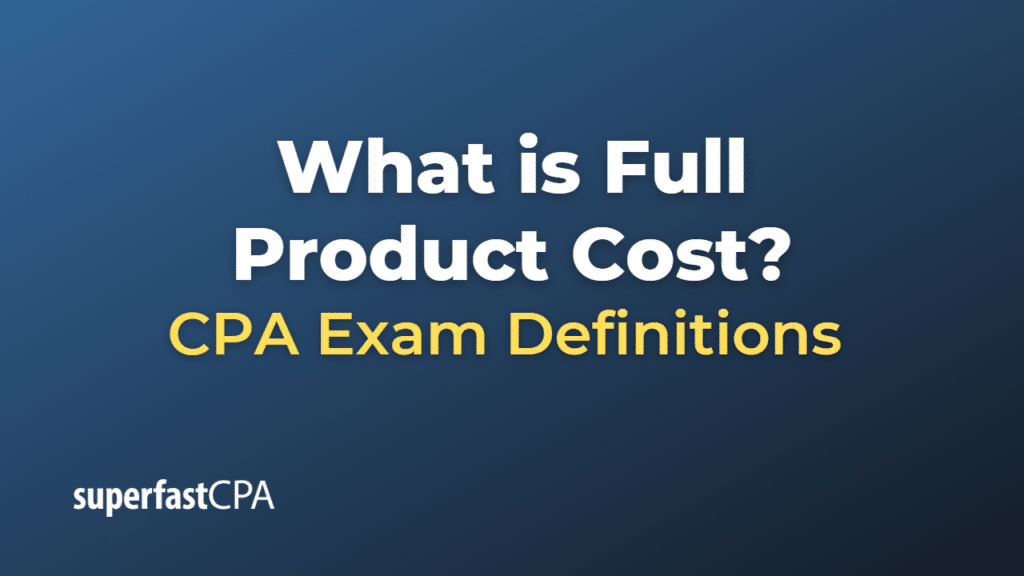Full Product Cost
Full product cost, also known as absorption cost, is a managerial accounting method that takes into account all of the costs involved in manufacturing a product. This includes not only direct costs like raw materials and direct labor, but also indirect costs like factory overhead, both variable and fixed.
The full product cost for a single unit of a product is calculated as follows:
Full Product Cost per Unit = Direct Materials per Unit + Direct Labor per Unit + Variable Overhead per Unit + Fixed Overhead per Unit
The variable overhead per unit and fixed overhead per unit are calculated by dividing the total variable overhead and total fixed overhead by the total number of units produced.
One benefit of full product costing is that it provides a more accurate picture of the total cost to produce each unit, as it includes fixed overhead that can be attributed to the production process. This approach is in compliance with Generally Accepted Accounting Principles (GAAP), and is used for external reporting.
However, it also has some drawbacks. Because fixed costs are spread across units, the cost per unit changes with the level of production. This means that if production levels are not at capacity, the full product cost per unit may be higher than if the company were producing at full capacity. It can make decision-making more difficult, because decisions that look good under one level of production might not look as good under another. That’s why, for internal decision-making purposes, managers might also use variable costing, which includes only the variable costs of production.
Example of Full Product Cost
Imagine a company, XYZ Manufacturing, that produces wooden tables.
The costs associated with producing a single table include:
- Direct Materials (wood, screws, glue): $100
- Direct Labor (wages for the workers assembling the tables): $50
The company also incurs variable manufacturing overhead costs, such as electricity for running the machines. Let’s assume the variable overhead cost per table is $10.
In addition to these costs, XYZ Manufacturing also has fixed manufacturing overhead costs, such as the monthly rent for the factory, property taxes, and salaries for the supervisors. These fixed costs total $200,000 per year.
Suppose the company produces 10,000 tables in a year. The fixed overhead cost per table, therefore, would be $20 ($200,000/10,000).
Using the full product cost method, XYZ Manufacturing would calculate the full cost of each table as follows:
Full Product Cost per Table = Direct Materials + Direct Labor + Variable Overhead + Fixed Overhead
= $100 (Materials) + $50 (Labor) + $10 (Variable Overhead) + $20 (Fixed Overhead)
= $180
So, according to the full product cost method, each table costs XYZ Manufacturing $180 to produce.
This amount would then be used in setting the selling price for the tables and recording the cost of goods sold when tables are sold, as well as in valuing the inventory of tables not yet sold.
This is a simplified example and does not consider other possible costs a company might incur in the production process, but it gives a basic understanding of how the full product cost is calculated.













